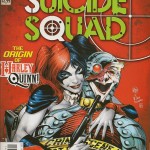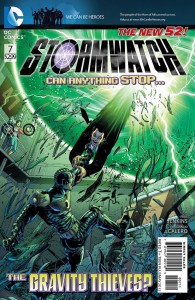 EDITOR’S NOTE: I spent eight years trying to reach him, and then another seven trying to keep him locked up because I realized what was living behind that boy’s eyes was purely and simply… spoilers.
EDITOR’S NOTE: I spent eight years trying to reach him, and then another seven trying to keep him locked up because I realized what was living behind that boy’s eyes was purely and simply… spoilers.
Now that everything is all said and done, it turns out that writer Justin Jordan has done something very interesting with The Strange Talent of Luther Strode: he has created a superhero comic book in which the hero is well and truly an unstoppable killing machine from a 1980s slasher flick. It is Halloween from the point of view of Michael Myers, or Friday The 13th as told by Jason Voorhees, only written as tragedy and I’m not getting my first handjob in a sticky theater back row during one of its Roman numeraled sequels (yet).
Jordan has made a leap in logic that I don’t think I’ve seen before except maybe by those millions of Generation X’ers who bought talking Freddy Kreuger dolls and traded his best kill quips in study hall, and certainly never codified in print. And that is that if an 80s slasher film villain is unstoppable, unkillable, and has some great catchphrases? And if they wear an easily-identifiable costume and or a mask (Freddy’s sweater, Michael Myers / Jason Voorhees masks)? Then the only difference between them and a comic book superhero is motivation and (sometimes) method. After all, where the rubber hits the road, the only difference between Freddy and Wolverine a surface level is the word “bub” over “bitch” and the violent murder of Johnny Depp, to which Wolverine can still only aspire.









 Podcast RSS Feed
Podcast RSS Feed iTunes
iTunes Google Play
Google Play Stitcher
Stitcher TuneIn Radio
TuneIn Radio Android
Android Miro Media Player
Miro Media Player Comics Podcast Network
Comics Podcast Network